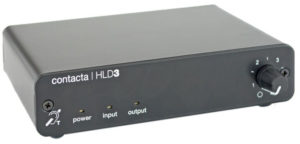by Neil Bauman, Ph.D.
A man asked,
Could I use a wireless microphone in a residential loop system? If yes, tell me more.
You betcha! All you really need to do differently from using a wired microphone is plug one end of a double-male audio patch cord into the audio output of the wireless microphone’s receiver unit and plug the other end into the line jack on the loop amplifier instead of into the mic jack. (That’s assuming the output of the wireless receiver is a line-level voltage—which it typically is—and not a microphone-level voltage.)
As far as the loop amplifier is concerned, the wireless receiver is just another audio device like a TV or radio so it works the same.
You can use almost any wireless microphone system—a fancy professional model costing hundreds of dollars, or a cheap $50.00 Radio Shack model. The difference will be in the sound quality and reliability. Basically, you get what you pay for.
Furthermore, it doesn’t matter what frequency the system works on—whether 72 mHz or 2.4 gHz or anywhere in between. This is because the output of the microphone receiver is standard voice-frequency audio.
It also doesn’t matter what kind of wireless system you use. It could be an infrared system, or a system that uses radio waves such as FM (or even AM), bluetooth or RF.
This means that the input to any loop system is completely flexible—you can use a line-level input (such as described above) or a microphone-level input such as you’d get by directly plugging a microphone into the loop amplifier (in the appropriate jack, of course).
And if you want to get carried away, you could use multiple microphones at once—feeding all the wireless microphone receiver outputs into a simple or fancy (automatic) microphone mixer sound board—and then, using a patch cord, plug the output of the sound board into the loop amplifier.
This can work very well for multiple speakers in meetings. We recently installed such a system. It used 4 wireless FM microphones that fed into a microphone mixer and from there into the back of the small Univox DLS-50 loop amplifier.



In terms of the multiple mics and the mixer, I am on a limited budget, but need to participate in a room of 20-30 interacting speakers not arranged around a table. The Olympus boundary mikes aren’t sufficiently sensitive. Would several higher quality table/boundary mikes work? I would appreciate any specific suggestions for mikes and mixer. Thank you.